#Jason and The Argonauts
Explore tagged Tumblr posts
Text
psst. "feminist" retelling writers. yes, i'm talking to you. i have a gift for you: here are some interesting women from greek mythology that you can write about that are NOT medusa, persephone or clytemnestra! there ARE other women, shocking i know!
-medea: she literally killed her brother and her children, i thought "female rage" girlies would be all over her
-danae: her life is so crazy, imagine being imprisoned by you father, getting impregnated by a god, being locked in a box and left to die at sea and then basically becoming a hostage to a king while your son is sent to kill a monster. and she's one of the only ones who, to my knowledge, actually gets a happy ending!
-atalanta: basically the only female hero in greek mythology!! and she was an argonaut!! c'mon now there is so much potential here, why does nobody care for atalanta
-the amazons: penthesilea! hippolyta! literally any of them! you're telling me there is a whole society of female warriors and so called feminist writers aren't jumping at the opportunity??
-hecuba: such a tragic and interesting figure, being the queen of troy, she lost her whole family in the war, i wish more people explored her relationship with her children (especially paris) and apollo
-andromache: i'm shocked andromache isn't more popular with the "tragic female characters" people, she literally lost everything basically because of men
-cassandra: i know cassandra is fairly popular, but i love her so much and i want more people to explore her relationship with her family, every dynamic has the possibility to be SO interesting
-electra: this whole family is a MESS and yet i see people mainly focusing on clytemnestra (with iphigenia), but not exploring the relationship between electra and clytemnestra is such a missed opportunity
-helen: i just want the focus of her story to be shifted from paris to the other people in her life, like her daughter hermione! how did they rebuild their relationship after troy? or her sister clytemnestra! what happened to her bond after the murder of agamemnon? or her brothers, castor and pollux! there is so much untapped potential
-demeter: there is a story about a mother's grief for her daughter, her journey looking for her, her anger, and yet every retelling of the homeric hymn to DEMETER focuses HADES to make him a dark romance mafia boss?? come on
and more!
conclusion: i'm tired of seeing the same stories being retold over and over again when there are so many characters to explore
#ancient greek mythology#greek mythology#greek myth retellings#medusa#persephone#clytemnestra#medea#danae#atalanta#the amazons#hippolyta#penthesilea#hecuba of troy#andromache of troy#cassandra of troy#electra#helen of troy#helen of sparta#demeter#the argonauts#jason and the argonauts#perseus#the iliad#homers iliad#homer's iliad#paris of troy#agamemnon#hades#tagamemnon
568 notes
·
View notes
Text
Skeleton power you say?


45K notes
·
View notes
Text



Details from the painting Medea meditating on killing her children (1852), by Bezzuoli.
#art#artworks#artwork#paintings#painting#art history#romantic movement#romanticism#the romantics#romantic art#neoclassicism#neoclassical art#italian artists#italian painters#bezzuoli#ancient greece#ancient rome#greco roman mythology#greek mythology#roman mythology#mythology#jason and the golden fleece#jason and the argonauts#jason and medea#medea#femme fatale#feminism#feminist icon#witches#witchcraft
3K notes
·
View notes
Text
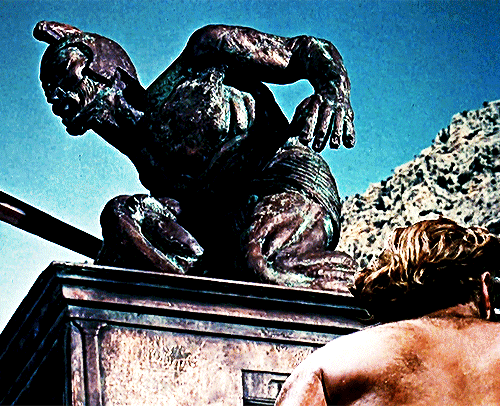
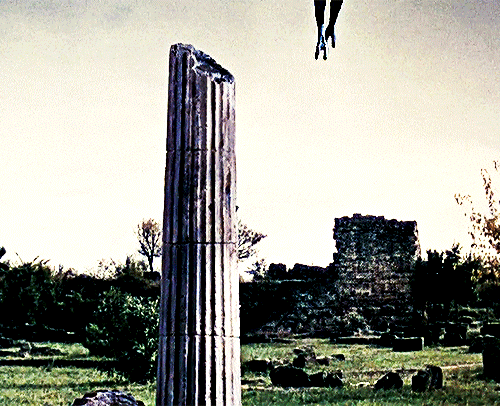

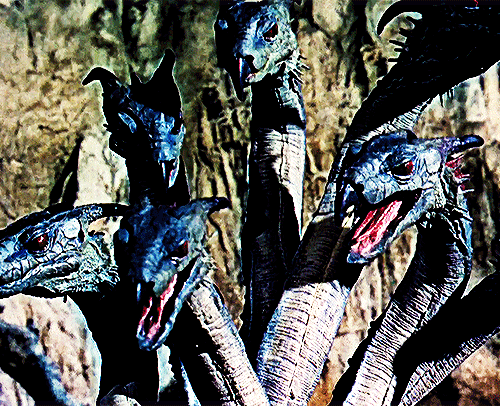
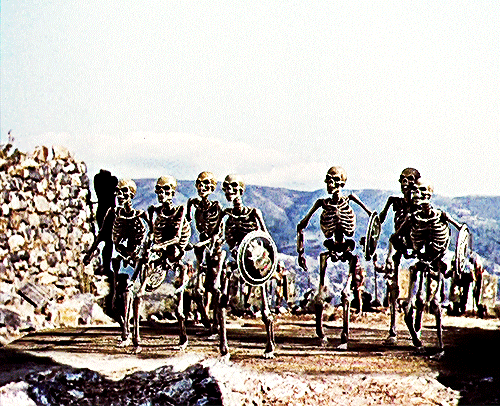
JASON AND THE ARGONAUTS (1963) Visual Effects by Ray Harryhausen Dir. Don Chaffey
#filmedit#filmgifs#moviegifs#movieedit#oldhollywoodedit#classicfilmsource#jason and the argonauts#ray harryhausen
3K notes
·
View notes
Text
Just watched Jason and the Argonauts and holy shit

I really crave whimsical fantasy.
I feel that today everything is poisoned with irony and smugness, even high fantasy. Everything has to be cynical or "a parody of", and it kills the romance.

This is the most epic shit i've seen in years in a movie, and that saddens me.
957 notes
·
View notes
Text

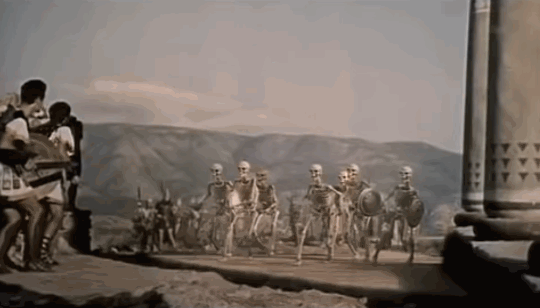

Jason and the Argonauts, Columbia Pictures, 1963, directed by Don Chaffey, starring Todd Armstrong and Douglas Wilmer -- but really starring the animated creations of Ray Harryhausen (born June 29, 1920)
#Ray Harryhausen#Jason and the Argonauts#sword and sandal#gif#gifs#skeletons#skeleton#undead#stop motion#film#movie#fantasy#Children of the Hydra#skeleton war#Todd Armstrong#Douglas Wilmer#1960s#Don Chaffey
839 notes
·
View notes
Text

The Golden Fleece by Herbert James Draper (1904)
#herbert james draper#art#paintings#fine art#20th century#20th century art#academicism#academism#academic art#painting#mythology#greek mythology#greek heroes#jason#medea#sorceress#absyrtus#the golden fleece#jason and the argonauts#classic art
3K notes
·
View notes
Text
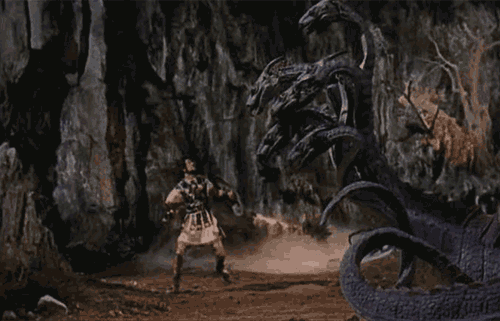
Jason battles the Ray Harryhausen-animated hydra in the 1963 film Jason and the Argonauts.
#Jason and the Argonauts#hydra#monster#Greek mythology#mythology#Ray Harryhausen#Dynamation#stop motion animation
558 notes
·
View notes
Text
I had an epiphany.
In “My Goodbye” from Epic - The Musical, Athena is referencing past heroes who she too abandoned, whether that was Jorge’s intention or not.
“This day, you sever your own head”
Perseus, who had slain Medusa
“This day, you cut the line”
Bellerophon, who was crippled/who died when he fell from the back of Pegasus, due to the crossing of the line of Olympus’s high heavens and the earth he wished to impress
“This day, you lost it all”
Jason, who’s wife, Medea, murdered his new wife, the woman’s father, and her very own children, and then he was forgotten
Consider this as my goodbye! This came to me in a dawning realization.
#epic the musical#greek mythology#greek myth#mythology#odysseus#athena#epic athena#athena epic#jorge rivera herrans#perseus#bellerophon#jason and the argonauts#epic the cyclops saga
1K notes
·
View notes
Text
one must sometimes spare a thought for circe. not the circe found in madeline miller's novel, but the one homer spoke about.
born to a powerful titan in the age of the olympians, a sister to thousands of siblings. yet never important enough to guard helios' cattle, never pretty enough to be married off to a human king of crete. never smart enough to stand beside her father. simply circe. young, unspecial, forgotten circe.
of how she saw kinship form for her siblings, and how strongly they loved. her mother forgotten by her father, simply another nymph, or the man she loved so dearly but who never glanced at her.
the rage that must have filled her veins when glaucus dared to appear before her and beg for a potion to trick a woman into loving him. how she loved him so purely, but was rejected and used. the regret that came when scylla no longer looked like herself, and how even then glaucus did not want her.
never good enough. replacable. easily cast out by her father, banished to an island where she will mother neither sons nor daughters, and constantly be forced to raise the daughters of gods who wanted sons.
will they become her daughters one day? will she go above and beyond to protect them as her own mother did not protect her?
what did she think, i wonder, when her niece appeared before her grasping a sword bearing the blood of her nephew? what could have possibly gone through her head when she saw the insincere look hidden within jason's eyes? i wonder if the gods told her how he scorned medea eventually, the same way glaucus did her.
and then he appears and he is everything she has ever wanted. but day and night he speaks of his wife, even as he lays in the warmth of her arms, in her silken sheets, hidden behind her wooden door held up by the walls of her home.
he sails away and that is that. another chapter. another empty nothingness.
one must spare a thought for the goddess waiting alone on the shores of a forgotten island amidst daughters she did not mother waiting for a destiny she will never find.
#tagamemnon#greek mythology#the odyssey#circe madeline miller#epic the circe saga#epic the musical#homer#the iliad#argonautica#jason and the argonauts#medea#i think about her a lot#how every man in her life spurned her#circe#you are everything to me circe
508 notes
·
View notes
Text

92 notes
·
View notes
Text

Call me a Lioness- for I have touched your heart in a Vital spot
#i do not play about greek tragedy#artists on tumblr#illustration#medea#ancient greece#greek mythology#jason and the argonauts#euripides#greek tragedy
89 notes
·
View notes
Text

"Hercules and Jason"
#hercules#herakles#jason and the argonauts#greek myth#greek mythology#greek legends#greek epic#greek heroes#ai men#ai generated#ai art community#ai artwork#gay ai art#gay art#gay fantasy#gay fantasy art#male form#male figure#male art#male physique#muscle definition#abdominals#homoerotic#art direction#fashion illustration#men loving men#gay couple#gay male couple#male intimacy#positive masculinity
190 notes
·
View notes
Text
Ok, so, The Odyssey got a whole musical for it. So can we get one for the Trojan war? Please?
I NEED that tragic song Patroclus sings to Achilles, begging him to go back into battle and he says something like “Please my love, go out and prove to them you are the best of men,” with desperate, strained music to show his stress. And then we get a reprised version after his death where Achilles says something like, “Come back my love, I know now you were the best of men,” and the music is a somber version of the original song. And both have a lyre as the main instrument. Please? Can we make this happen?
OR A MUSICAL OF THE ARGONAUTS + MEDEA! This would go SO hard. As long as Medea is accurately portrayed as the morally gray tragedy that she is and not a one note villain, this would be AWESOME.
#Epic#epic the musical#the odyssey#the illiad#the iliad#illiad#iliad#homeric epics#homer’s iliad#greek mythology#jason and the argonauts#the argonauts#medea#musicals#Patrochilles#patroclus#achilles
101 notes
·
View notes
Text
I think that one of my favorite parts of studying the Iliad and the Trojan war is how incredible the world building is. The fact that you can research any of the characters and find their life prior to and (in some cases) after the Trojan War, their families and typically fathers which themselves form parts of different epics (Telamon, Peleus and Laertes all being Argonauts who sailed with Jason for the golden fleece) (Depending on the version Herakles, Orpheus, Theseus and Atalanta could’ve also been there with them), and just how much content there is about each figure in the war that you wouldn’t know just by reading the Iliad.
Why was Paris chosen by the gods to pick which goddess was the most beautiful? He proved to the gods on a previous ocassion in a bull competition he hosted which Ares won that he was a fair and honest judge (I guess he lost that fairness in judgement by the time the goddesses appeared before him)
How did Achilles become such an almost undefeatable warrior? He was the son of an Argonaut and a sea-nymph raised by Hera whom both Poseidon and Zeus wanted to bed, and was trained by mighty Chiron who taught heroes like Orpheus and Herakles.
Why are the walls of Troy “impenetrable”? They were built by Apollo and Poseidon disguised as humans due to a punishment from Zeus.
And this is all known with thousands of lines of the Trojan War’s story being lost to time. Imagine if we had more of the Nostoi or Cypria or Little Iliad, if we still had plays like “Myrmidons” or had a better historical understanding of Mycenaean Greece.
And still, with all this content, the Trojan War is just a section of the greater greek myths. The mythologized greek world existed far before Troy, and it continued to push forward far after.
#greek mythology#tagamemnon#trojan war#jason and the argonauts#argonautica#achilles#paris#ares#laertes#telamon#peleus#poseidon#zeus#apollo#ancient greece#homer
351 notes
·
View notes
Text
The chess game between Medea and Jason and how Medea's original story is a feminist story:
So a few days ago I was talking to @teawiththegods about a book he had read that was a feminist re-telling of Medea. The author seemed to have lacked a very fundamental understanding of Medea's character because Hecate wasn't mentioned in the book at all, which is wild since Hecate is Medea's go-to goddess for every spell she does!
But as we talked further it was clear the author also lacked a very fundamental understanding of Medea and Jason's relationship towards the end of their separation but it's one of my favorite parts of Medea's story which, in my opinion, makes it feminist by itself but not many people understand that because they lack the ancient context for which it was written that drives the point that:

Medea won a chess game where the odds were stacked in favor of Jason and the game was rigged against Medea herself:
How were the odds of the game stacked in favor of Jason:
1) Medea couldn't kill Jason or he'd win:
One of the main things people complain about regarding the story of Medea is Medea killing her children and wonder why she didn't just kill Jason instead. But the reason why she didn't do that, and why she couldn't kill Jason at all was because she would have immortalized Jason's heroic persona.
In ancient Greece they believed the best thing someone famous could do was die at the height of their popularity so they wouldn't have time to ruin their own reputation and legacy. At the beginning of Euripides's Medea, Jason is at the height of his popularity. This is evident by the king of Corinth wanting him to marry his daughter because he was the legendary Jason from Jason and the Argonauts (the ancient equivalent of being the modern leader of the Avengers since he also assembled legendary heroes in his ship like Hercules and Orpheus).
Jason knew he had the upper hand and if Medea killed him, he would forever be remembered as a hero who was tragically killed by his jealous wife (in the same way Agamemnon was killed by his own wife Clytemnestra) and Medea herself already had a bad reputation for killing her own brother, despite her only doing so to help Jason escape her father.

2) If she killed Jason, her own children would have to kill her:
Her children would be bound by the gods to kill her and if they did kill her, the furies would come to torment them for killing their own mother.
In Aeschylus's Oresteia, written a good 20 plus years before Euripides's Medea, One of the main tragic points in the story was Orestes being duty-bound to avenge his father which meant he had to kill his mother. In ancient society this was a rule. Children, especially sons, needing to avenge their parents, especially their fathers, so Jason knew that if Medea killed him, not only would she ensure his heroic legacy, but the ones in charge of carrying out his revenge were his sons, the keepers of his legacy, who were also the great-grandchildren of Helios (Medea's father was his son).
Medea preferred living with the guilt of killing her own children rather than the thought of forcing her own children to kill her and be forever tormented by the furies if they did, or be punished by the gods for not avenging their father if they did not. She had already killed her own family member for Jason before, so killing again for Jason would be a type of dramatic irony that now also affected him.

3) If she did nothing Jason would still win:
When I say Jason had everything, I mean he had everything. He was going to become the king of Corinth and live his life as a hero.
Medea is the reason behind him getting the golden fleece and she is the power behind all of his success and he was going to take her credit and cast her out of his new kingdom along with their children. He didn't care if his children were going to be bound to a woman who had a cursed reputation and be doomed to living a life of extreme poverty. He only cared about getting rid of his previous family to make room for a royal family, in his opinion, a proper life fit for a hero. He was Hera's favorite and even Medea could see that he had insulted Hera (the goddess of marriage) by not honoring his own marriage vows to her. Jason was being selfish and Medea couldn't let him just get everything he wanted.
Imagine working so hard to help someone you loved and trusted and you sacrifice your own comfortable and cushy life only for them to steal your credit, take all of your stuff and curse you to a life of poverty, and despite how he fucked you and your children over, your children still had to praise their father because they are bound to his legacy! He is the reason why you are irrelevant and no one will ever remember you except as a stepping stone for HIS success!

Jason took Medea's credit, used her as a stepping stone to reach his heroic status and had children with her who were a part of taking care of his legacy and bound to avenge him if she killed him. But if she chose not to do anything to him he would win either way and his legacy was set to be praised forever, this time as a king who could continue to expand his legacy and potentially turn into a god like Hercules. There was nothing she could do about it.
How she won and ruined his legacy and reputation:

1) Using her status as Jason's property:
Like most ancient Greek women, Medea was seen as Jason's property which made her his responsibility.
A lot of people think it was unnecessary for her to have killed the princess of Corinth because it wasn't the princess's fault who her father wanted her to marry but Medea was trying to kill the king of Corinth himself and she knew he was going to hold his dying daughter without realizing he too would get killed through the poisoned garments. Plus Medea knew the princess of Corinth wanted to exile her children with her and doom them to a tragic life which is why she sent her children with gifts from Helios in order to beg the princess to change her mind about exiling them.
What would killing the king and his daughter do to Jason? He would be blamed for not knowing how to "handle" his woman and "control" her, as was expected of men back then. Her outbursts were his responsibility.
Her killing the leader of Corinth and his only successor made Corinth vulnerable for another kingdom to invade. As Jason's property this made Jason the reason behind Corinth's downfall, thus causing Jason to be known as a cursed hero who will ruin your city-state if you try to associate with him or even welcome him into your home.

2) Jason depended on his children to fix his reputation:
Did Medea have to kill her children? Yes, because she knew that if she didn't whether they wanted to or not, they would undo everything she had done to ruin him because when ancient Greek people did well their fathers would also be praised because their father's names were used as a last name for the child for example: Odysseus's full name is actually Odysseus son of Laertes and thus in the ancient world whenever you praised Odysseus you were also praising his father Laertes.
Similarly, Jason's children had a duty to fix their father's reputation which means that if she allowed them to live, they would also do their best to uphold his reputation and undo everything and Jason would still win. Even if they didn't like him or they didn't' want to they had to. Plus already being the great-grandchildren of Helios, the sun itself meant they were already great, which meant their father was already great because they had "son of Jason" attached to their names as a last name.
So imagine your ex has ruined your life because before he came into your life you were the princess of Colchis, the granddaughter of the sun itself, your father was a demigod and your aunt was Circe! The same Circe who turned Odysseus's men into pigs. You had everything and you left your glamorous life because you fell in love with someone who stole your credit, used your ancestral connections to Helios and ultimately betrayed you. And now that you found a way to ruin him in order to avenge yourself, your own children, regardless of their own complicated feelings towards their father would have to undo everything you did and uphold his legacy as a hero so he still won. But killing them would ensure your ex will be seen as a walking bad omen and ruin his reputation forever.

3) Killing her children sealed Jason's fate:
Jason never expected Medea to kill her own children, no one did because no woman had ever done that before but Medea herself was already a walking curse, she knew that if she killed her children the world would pity them and never blame them for what she did but if she allowed them to live they would be at odds with her because of how society favored fathers plus she also risked ruining their reputation and living a miserable life anyway because of her own reputation.
Being exiled meant they would potentially have faced a lot of SA as children who are doomed to wander and potentially live as slaves if they got kidnapped. Medea herself would have to be a sex worker if she wanted to make money to support her children as a single parent while Jason lived a glamorous life as the king of Corinth.
If she killed Jason they would have to kill her no matter how much they loved her or they would be cursed by the gods.
If they live they would automatically fix Jason's reputation if they gained glory and would have to blame their mother in order to explain why their father, the hero, was cursed. No one would care that Jason stole her credit and she was angry about it because they were married and according to their customs, she is his property and her credit is his credit.
But if Medea killed them, they would not be blamed for anything, they wouldn't be used as pawns to fix Jason's reputation and Jason would also be blamed for not knowing how to "handle" his wife and save his children, and Medea would finally get the revenge she has been wanting for every wrong Jason has ever committed. He would finally feel the pain she felt from his betrayal. He would finally feel as helpless as this game of chess made her feel. He would finally suffer in the way he made her suffer.

In the end she cursed him to live a life where his reputation was ruined and when he finally became irrelevant, he died being killed by the rotting wood of the very same ship which once made him great.
Checkmate.

#Medea#greek gods#greek mythology#greek myths#jason and the argonauts#Jason#jason and medea#greek tragedy#ancient greek tragedy#long post
158 notes
·
View notes